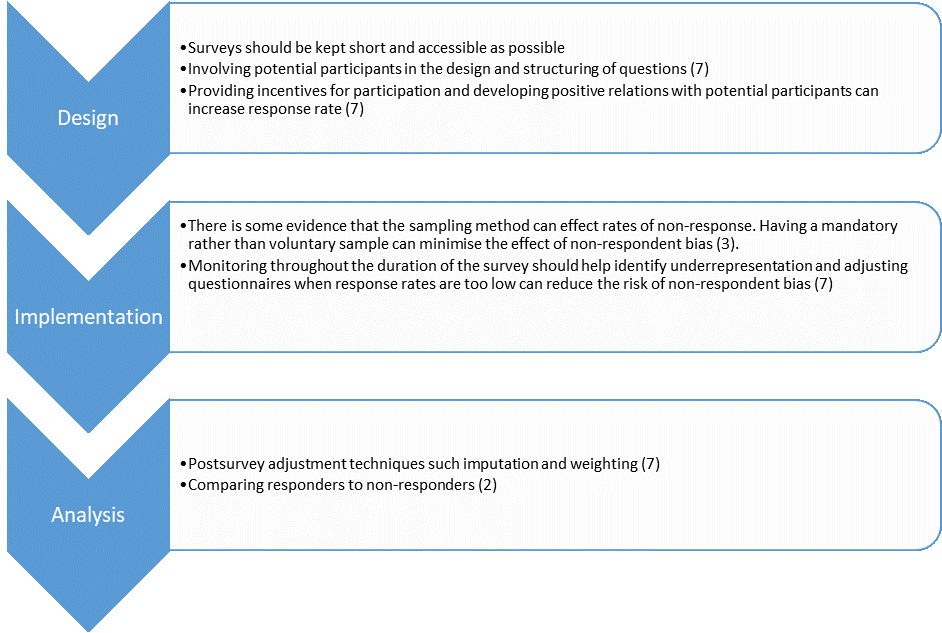Background
Non-response (or late-response) bias occurs when non-responders from a sample differ in a meaningful way to responders (or early responders). This bias is common in descriptive, analytic and experimental research and it has been demonstrated to be a serious concern in survey studies. Participants who do not respond may differ from those who do in their exposures or outcomes. This can then result in mistakes in estimating population characteristics based on the underrepresentation of these phenomena due to non-response
One framework for assessing non-respondent bias is the Continuum of Resistance model, which postulates that the willingness to participate in an invited survey varies linearly within the sample. It, therefore, follows that late-responders are expected to be similar to non-respondents on the measures of interest (Kypri et al 2011).
Example
A study which aimed to investigate the potential effects of non-respondent bias on prevalence estimates of self-reported health behaviours and well-being demonstrated a strong and consistent effect of non-response on all health estimates, as well as considerable effects on the distribution of demographic characteristics. Non-response was determined to contribute to underestimated health risks.
Impact
In a community cardiovascular follow-up study, females, older individuals, and those with higher levels of education are more likely to participate in postal surveys. However, non-response may also occur as a result of the actual outcome variables of interest. Those with poorer health tend to avoid taking part in health surveys and those who do take part report better health status and behaviours (Cheung KL, 2017)
Preventive steps
A number of steps can be taken during the design, implementation and analysis of the study to reduce or mitigate the risk of non-respondent bias.


